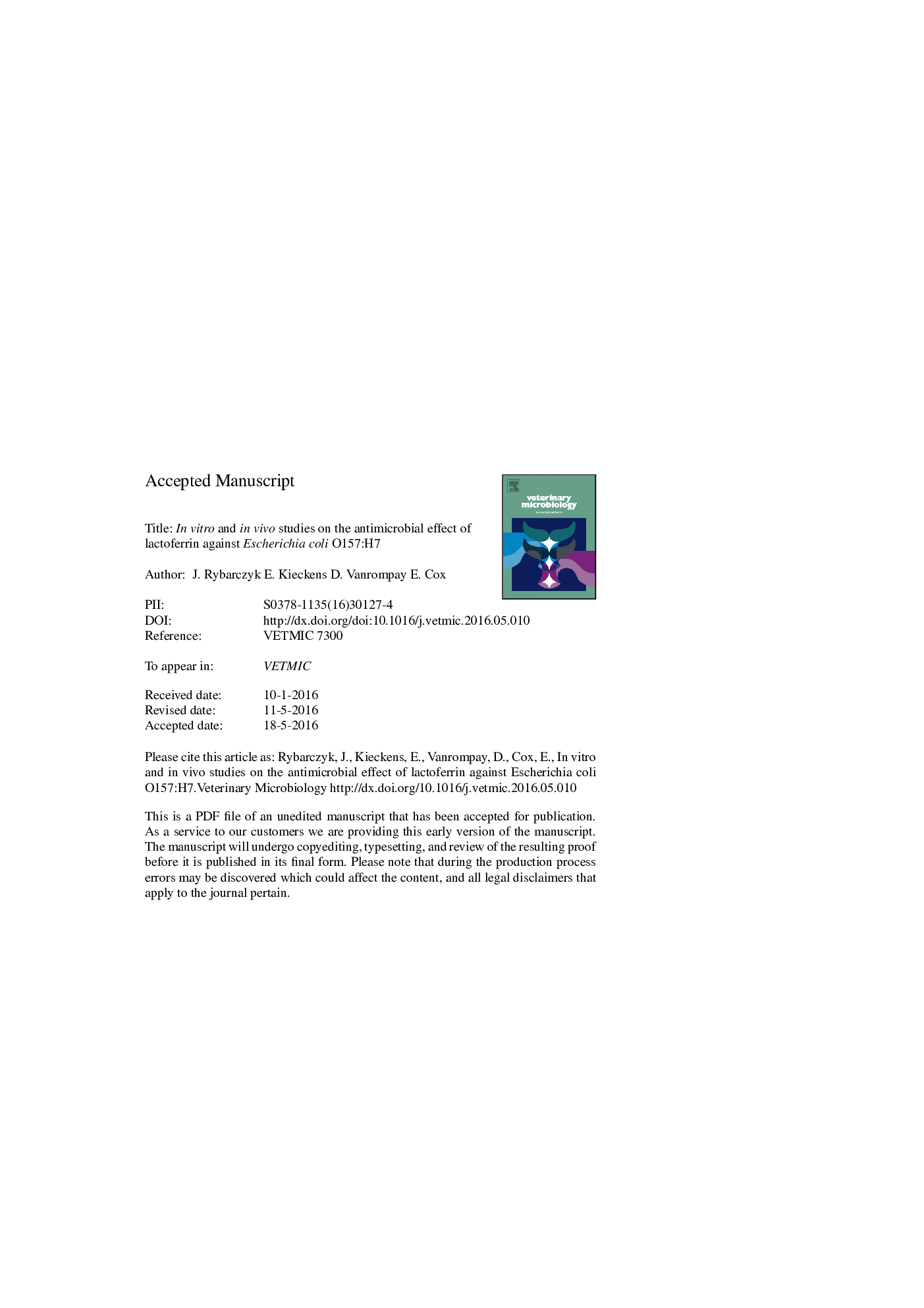| Article ID | Journal | Published Year | Pages | File Type |
|---|---|---|---|---|
| 5545155 | Veterinary Microbiology | 2017 | 27 Pages |
Abstract
Escherichia coli O157:H7 shed by clinically healthy ruminants has been linked to hemorrhagic colitis and the hemolytic uremic syndrome in humans. The bacteria are spread mainly by contaminated food and water, contact with animals carrying the organisms, and person-to-person contact. Although many intervention strategies have been studied to reduce E. coli O157:H7 carriage in ruminants and its spread into the environment, none of the available methods can completely eliminate the infection. Therefore, there is need for new intervention strategies which will effectively reduce E. coli O157:H7 prevalence. Lactoferrin, a member of the transferrin protein family, is an iron-binding glycoprotein that is found in many exocrine secretions, including milk, tears, saliva, and serum. Lactoferrin has a number of biological functions including antimicrobial and immunomodulatory effects. This review summarizes latest data on the antimicrobial effect of lactoferrin against E. coli O157:H7 in in vitro and in vivo studies.
Related Topics
Life Sciences
Agricultural and Biological Sciences
Animal Science and Zoology
Authors
J. Rybarczyk, E. Kieckens, D. Vanrompay, E. Cox,
